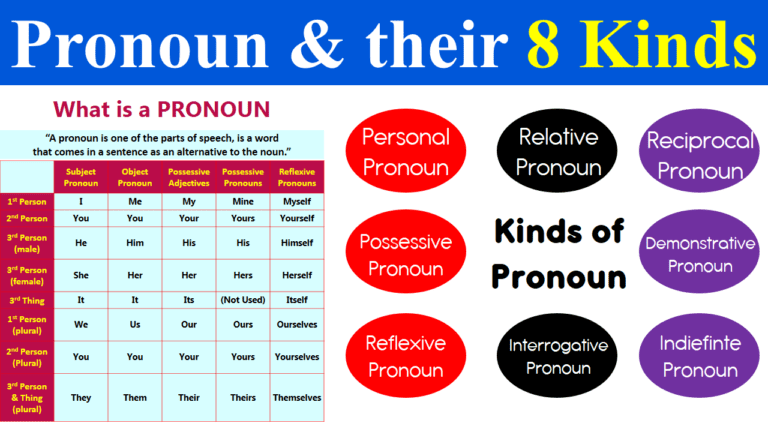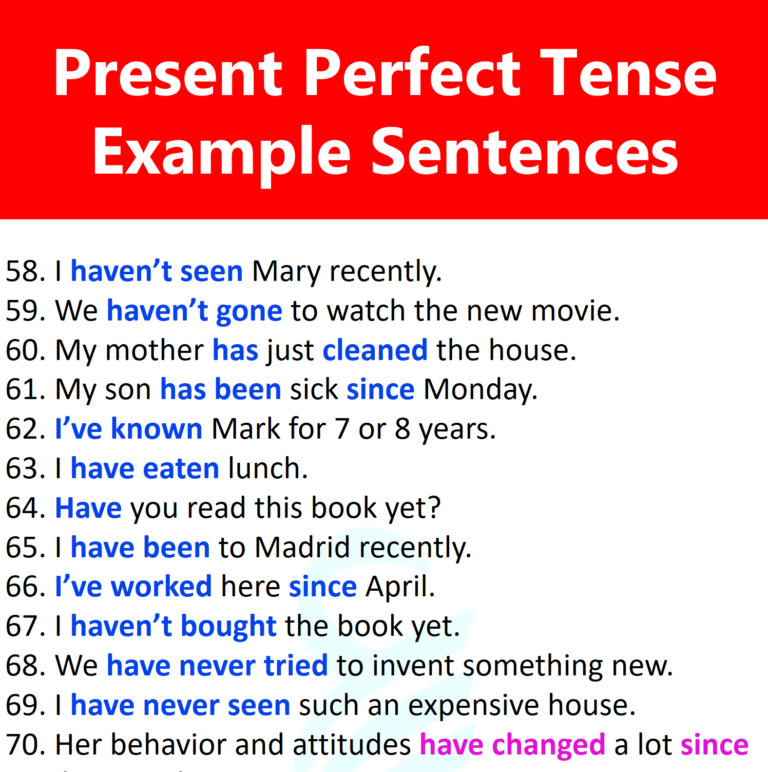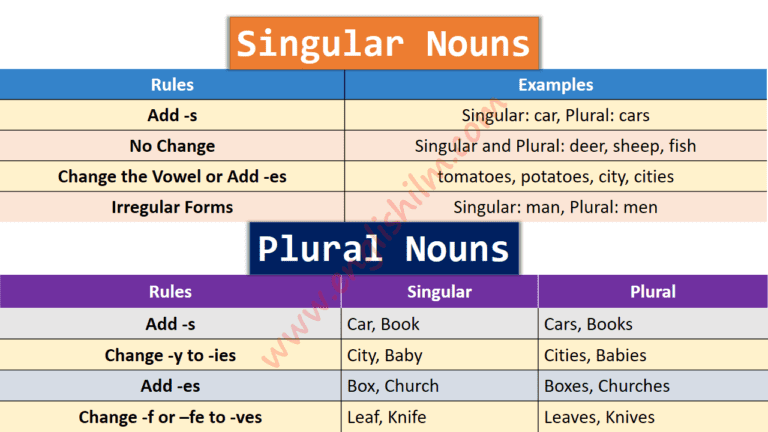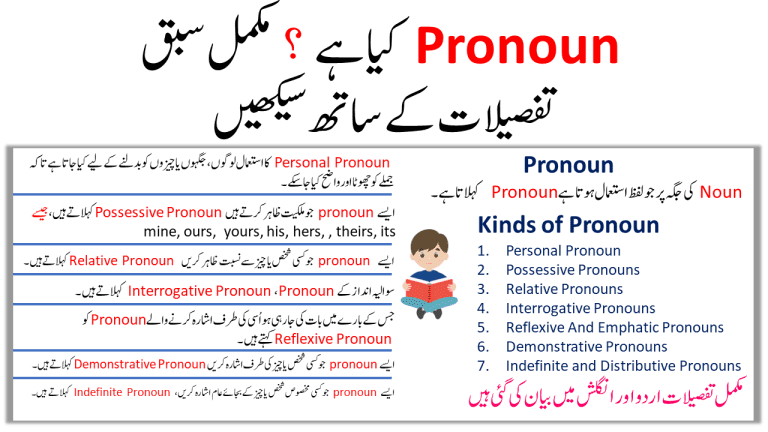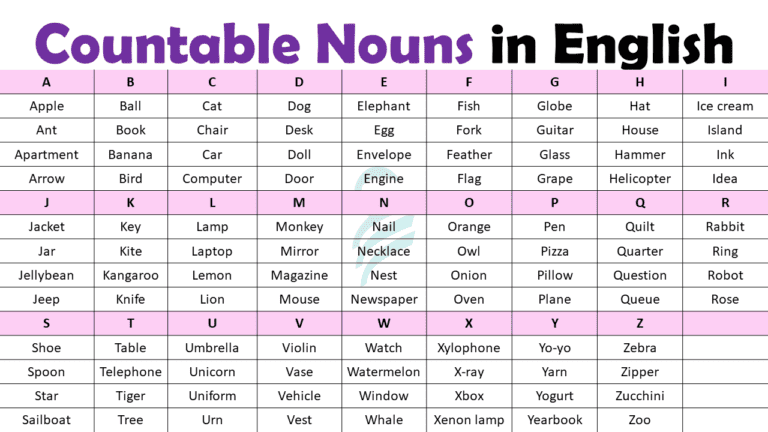In this blog post, you will learn about verbs, a key part of English grammar. We will cover the definition of verbs and explain 9 different types, helping you understand how they function in sentences. This lesson is perfect for anyone looking to improve their understanding of English grammar and the parts of speech. You’ll also explore the subtypes of verbs with clear examples to enhance your learning.
What is a Verb?
A verb is one of the parts of speech, also called a predicate, used in a sentence to perform an action, its existence, or its occurrence. It plays an essential role in the structure of a sentence.
In simple words, it is used to express or perform the state of being, physical action, or mental action. A verb forms a full clause or sentence; without a verb, the sentence is always incomplete.
Mainly, verbs are of two types: regular verbs, and irregular verbs, respectively.
Forms of verbs placed accordingly in the sentence:
- Subjective verb
- Direct, objective verb
- Indirect objective verb
- Participles
1. Subjective Verb
In a sentence, if a person or a thing comes with the verb to perform some action, then it is called the subject of the verb, and that verb is called a subjective verb.
For example:
- John worked here.
- Here, “John” is the subject of the verb “to work”.
2. Direct Objective Verb
Verbs that execute some action are called direct objective verbs.
For example:
- He slept with her.
- Here, “with her” is the direct object for the verb “to sleep”.
3. Indirect Objective Verb
Those verbs that contain two objects in a sentence are called indirect objective verbs. The action was performed on any person or thing as an indirect object.
For example:
- Jessica came to London for her business.
- Here, “Jessica” is a direct object, and “to London” is an indirect object for the verb “came.”
4. Participles
The verb forms participles, and there are two types of participles:
- The present participle ends with “-ing” as a suffix.
- The past participle has multiple ends like “-ed, -en,” etc.
For example:
- We are going to a picnic.
Here, “going” is a verb in the present participle form.
- She came to the hospital.
Here, “came” is a verb in the past participle form.
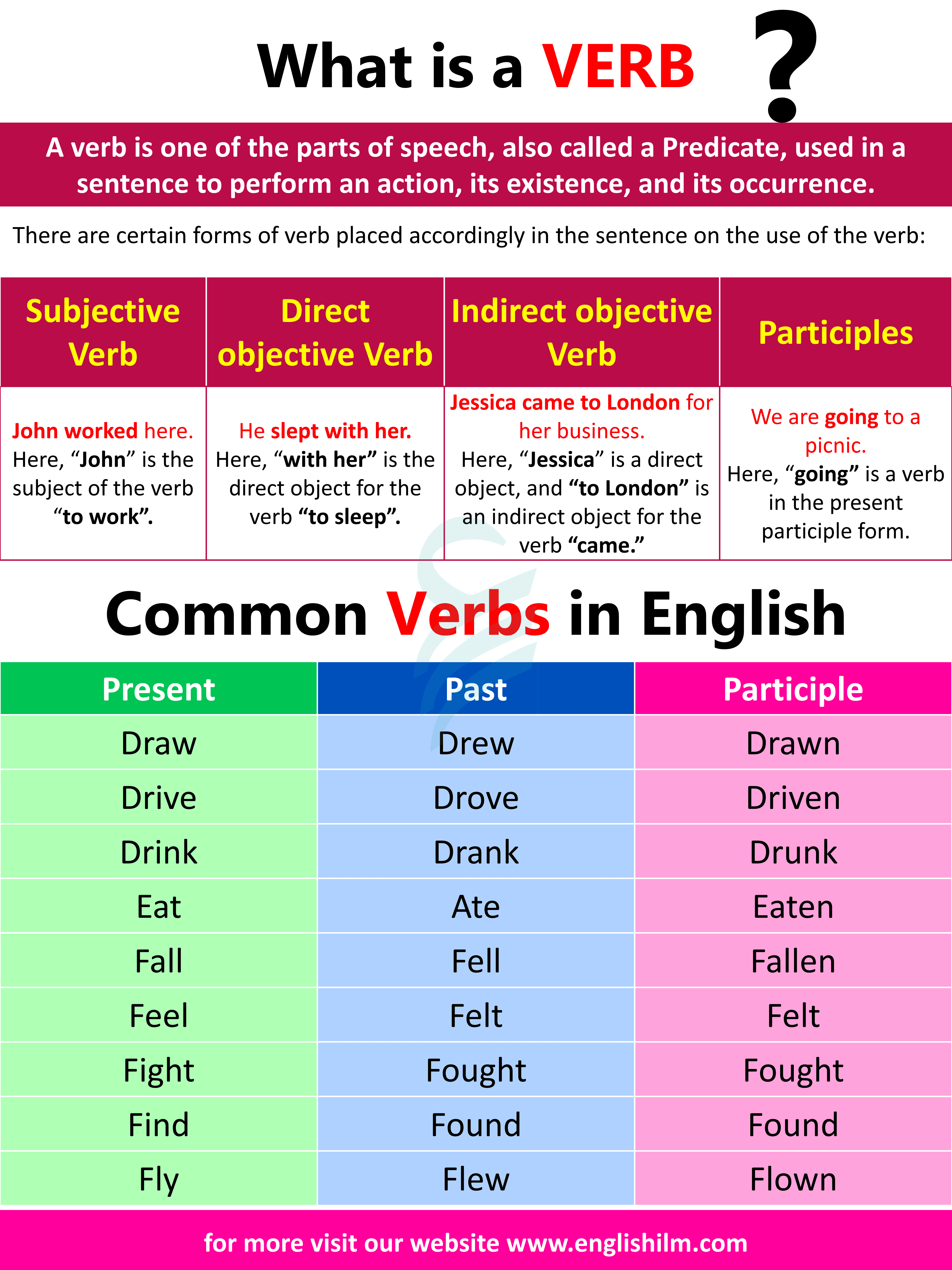
Verb forms that show the Action
1. Physical Verbs:
The physical verbs are called action verbs, which show some action performed physically by the body, either by any person or any animal.
For example:
- She walks on the road.
- He is swimming in the lake.
- Jonathan is eating his lunch.
2. Mental Verbs:
Mental verbs are called conceptual verbs, which show some activity of the person not by the body but by thinking, planning, etc.
For examples:
- I need your help.
- She is noticing me for the last few days.
- He believes in God.
3. The State of Being Verbs:
We can also call them linking verbs, which express the circumstances that occur. These verbs are called action verbs, as they only come into existence when any action is performed on them.
These adverbs have “to be” forms, such as am, is, and are respected.
For example:
- She is a nice girl.
- They are good basketball players.
- I am an architect.
Also, the verb is further classified into two types.
- Phrasal verb
- Regular and irregular verbs
1. Phrasal Verbs
Phrasal verbs generally contain more than a single word to make a phrase, and as we know, the phrase consists of the main verb and another word to obtain some different meaning other than a verb.
Usually, the phrasal verb consists of one main verb and the other one is either preposition or conjunction, etc.
For example:
- Bring out, Make-up, Chill-out, Cheer up, Hang out, Run-down, etc.
For example:
- The mason is constructing a house so that he doesn’t have to construct it again.
Here, the word “construct again” is a phrasal verb that means to rebuild again.
- He pointed out some important topics in the meeting.
2. Regular and Irregular Verbs
A regular verb is a verb whose participle is either simple past tense or past participle, respectively.
It adds up to “-d or -ed” at the end of the word in its base form.
- Moved, moved, moved
- Work worked, worked
- Live, lived, lived, etc.
For example:
- She moved on from that relationship.
- I worked for this company.
But, in the case of irregular verbs, they do not obey any of the rules, like repeated spelling patterns, as a regular verb does.
- Give, gave, given
- Take, took, taken
- Forget, forgot, forgotten, etc.
For example:
- They gave him a second chance to prove himself in the next match.
- She forgot to take her tiffin along with her.
Types of Verbs
Apart from these types, verbs have 9 major types, as mentioned below:
- Finite verbs
- Non-finite verbs
- Stative verbs
- Action verbs
- Transitive verbs
- Intransitive verbs
- Linking verbs
- Modal verbs
- Auxiliary verbs
Finite Verbs
Finite verbs are also called limited verbs or actual verbs, which are the background of the sentence and are responsible for tense formation.
According to the number or person of the subject in a sentence, a finite verb can be used in one of the twelve forms of tense.
For example:
- She waters the plants daily.
- He is smoking in front of his parents.
- I won’t be present at the meeting for some reason.
- Raghav forgot his business file at home.
- The dog barks at the thief.
Non-finite Verbs
Non-finite verbs are the opposite of finite verbs, which are not actual. It does not represent a tense formation. It works as a noun, adjective, adverb, etc. in a sentence despite working as a verb.
Also, it does not change according to the number or person of a subject, sometimes it functions like a subject itself.
Gerund, infinitive, and participle (participles turn finite verbs if added auxiliary verbs) are the forms of non-finite verbs.
For example:
- He loves eating chocolates. (Gerund)
- Here, “loves” is the main verb, and “eating” is a non-finite verb.
- Sam woke up early and went to the gym. (infinitives)
- Listening helps to increase knowledge. (Gerund)
- Working on farmland makes you active. (Present participle)
- The nail is twisted by hammering. (Past participle)
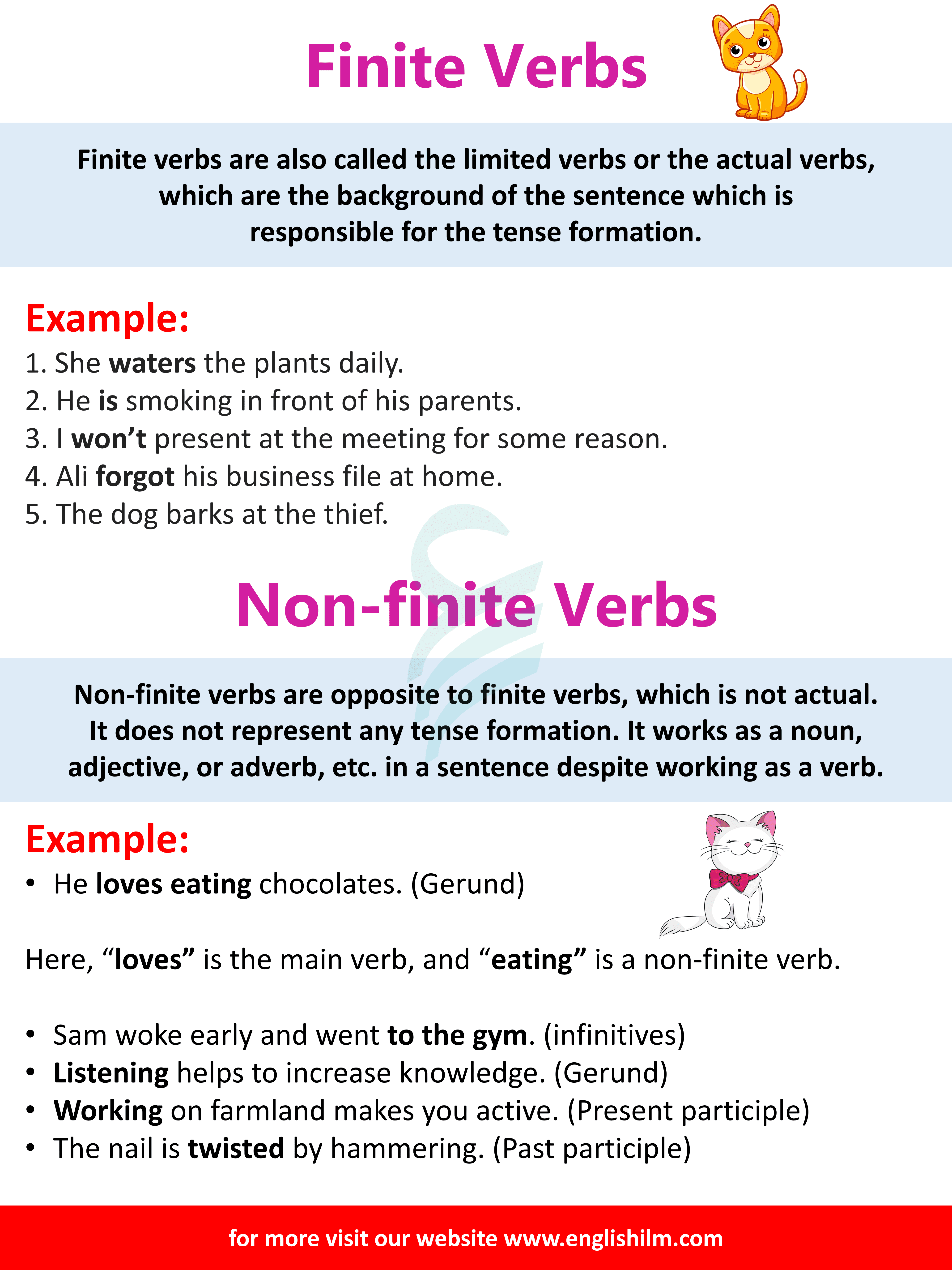
Stative Verbs
Stative verbs are ultra-fine, and it is quite complicated to judge verbs. They express any existence (state of being in mental, physical, and emotional means) or any position, that has no period, neither a starting nor an ending point, and no action takes place.
For example:
- The doctor agrees to start the operation immediately.
- She feels very sick today.
Types of Stative Verbs
There are four types of stative verbs explained with the help of examples:
- Qualities/State of being verbs
- Sensing verbs
- Emotional verbs
- Possession verbs
1. Qualities / State of Being Verbs:
The verbs that indicate any quality or state of being, regarding the subject in a sentence are called qualities or being verbs.
- Consist, involve, contain, attain, require, be, have, etc. are called the state of being verbs.
2. Sensing Verbs:
Sensing verbs express some sense or feeling in a sentence.
- The words smell, hear, taste, touch, look, sound, etc. are called sensing verbs.
3. Emotional Verbs:
Emotional verbs express certain emotions or feelings in a person.
- Forget, remember, think, enjoy, believe, love, doubt, understand, etc. are called emotional verbs.
4. Possession/Controlling Verbs:
Possession verbs are also meant to own something or be in control of it.
- Live, belong, own, stand, face, etc. are called possession verbs.
For example:
- Remo loves swimming in the river. (emotional)
- You should respect your elders; they deserve it. (emotional)
- That recipe smells so delicious. (sensing)
- I have a better idea to go out of this forest. (state of being)
- My dad owns this property after my grandfather’s death. (possession)
Action Verbs
A verb is called an action verb when it shows any action or performance of the subject (a person or a thing) in a sentence. It is also called a dynamic verb.
- Sleep, run, eat, drive, listen, carry, read, throw, play, etc.
Action verbs can also be transitive or intransitive.
For example:
- Sunny is adopting a baby from an orphanage.
Here, “Sunny” is a subject performing the action of “adopting” the baby.
- She is cooking food for his younger brother.
- He is anchoring on the stage in today’s event.
- She always listens to her parents.
- The truck carries a huge load from its capacity.
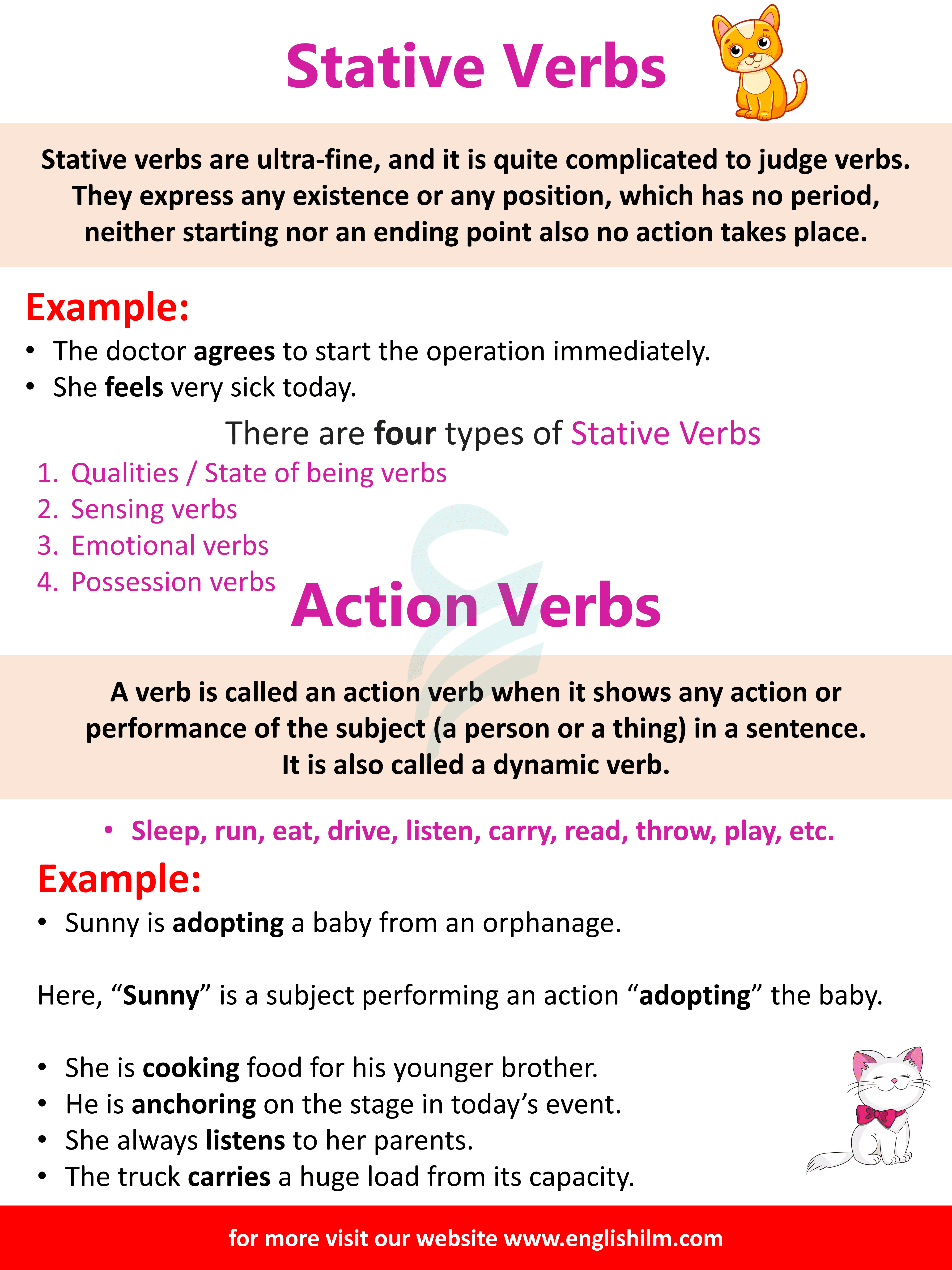
Transitive Verbs
Transitive verbs need a direct object in a sentence in which an action is taking place.
For example:
- Maintain, believe, tolerate, respect, etc. are called transitive verbs.
For example:
- He drove the plane in an emergency.
Here, “he” is a subject and “the plane” is a direct object which is to be flown, “drove” is a transitive object.
- He ate his dinner before the time.
- She baked a cake for her friend’s birthday.
- I delivered the consignment.
- My father took me to the hospital when I was sick.
Intransitive Verbs
Intransitive verbs do not need a direct object in a sentence to act on it. It may be acted with an adverb, preposition, adjective, noun, and other parts of speech present in a sentence.
For example:
- Play, run, sleep, sneeze, walk, etc. are called intransitive verbs.
For example:
- He sneezes.
Here, “sneeze” is an intransitive verb that performs independently.
- Suddenly he laughed.
- It’s snowing.
- Something has happened.
- He sleeps at night.
Note: A subject and an intransitive verb together can make a sentence.
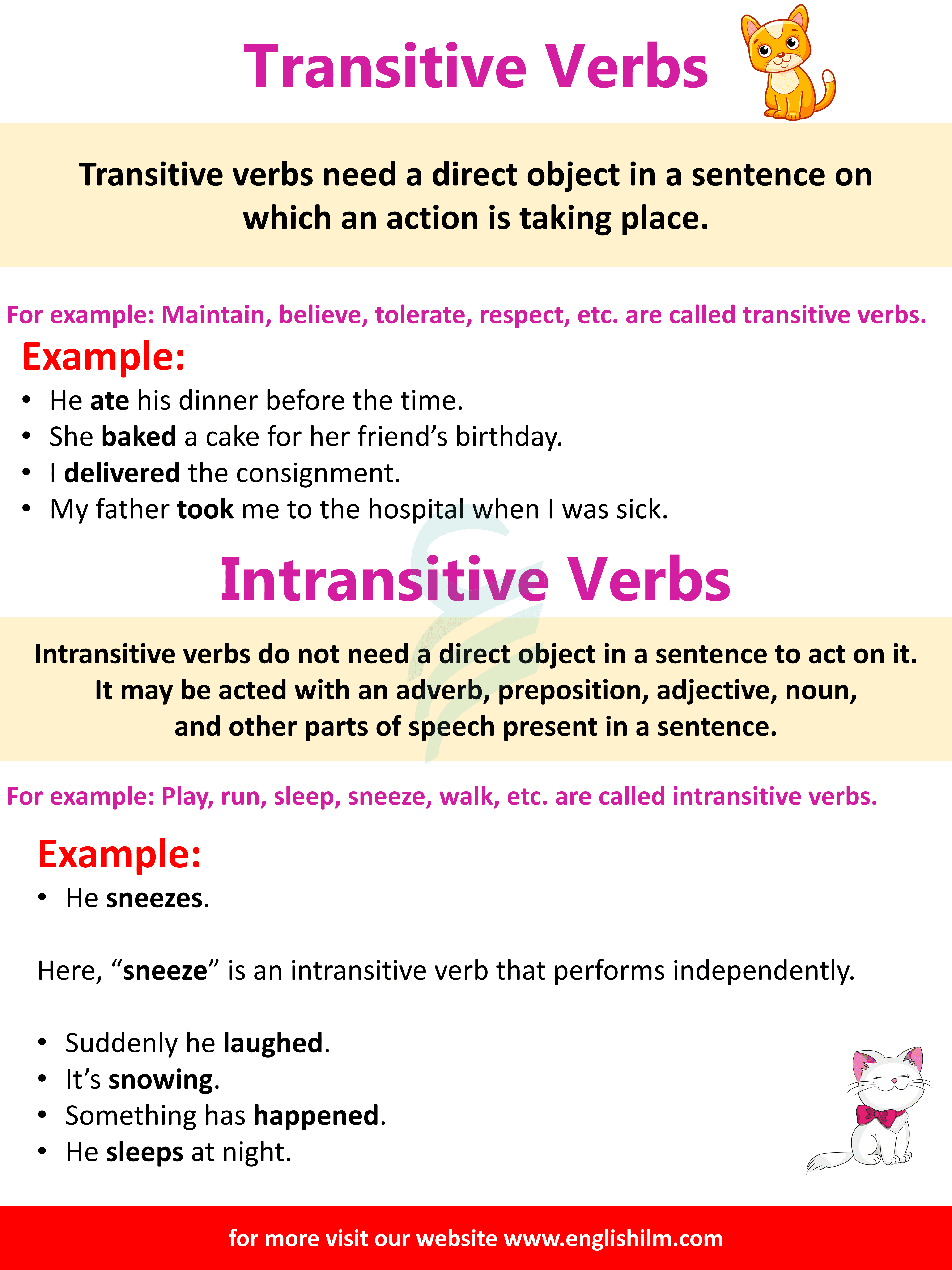
Linking Verbs
The linking verb shows several links between the subject and the object in a sentence. It does not show any action in a sentence.
- “Am is, are” are called linking verbs.
Although, linking verbs are:
- Grow, feel, taste, remain, appear, act, smell, sound, become, stay, etc.
For example:
- This store remained open the whole night.
- They all are going to excavate.
- The smell of the soil is fantastic in the rainy season.
- I am Jayson Fernandez.
- The rainbow appears in the sky after the rain.
Types of Linking Verbs
The linking verbs are of two types,
- True linking verbs
- Linking/action verbs
1. True linking Verbs:
True linking verbs are used only for linking purposes.
- Am, is, are, has, was, were, become, being, seems, etc.
For example:
- He was jealous.
- They are ready to perform.
- The roller coaster is moving faster.
2. Linking Verbs/Action Verbs:
Linking verbs or action verbs are used to show some action between the subject and the verb, respectively.
- Remain, stay, turn, grow, feel, prove, get, etc.
For example:
- She disappears after the party.
- She frequently looked at me.
- The fresh vegetables smell good.
Auxiliary Verbs
Auxiliary verbs are also called helping verbs. It helps the main verb to extend its meaning in a sentence or maybe present either single or doubles in a sentence. It also helps to form either a question or to make negatives.
For example:
- Is, am, are, was, were, have, has, should, would, do, can, may, did, could, will, etc. are called auxiliary verbs.
Examples:
- He is coming from London by flight.
Here, “has” helps to identify the tense.
- We have been shifting to Poland after a few days.
- She was not feeling well last night.
- They are performing well in tournaments.
- Could you help me to complete this project?
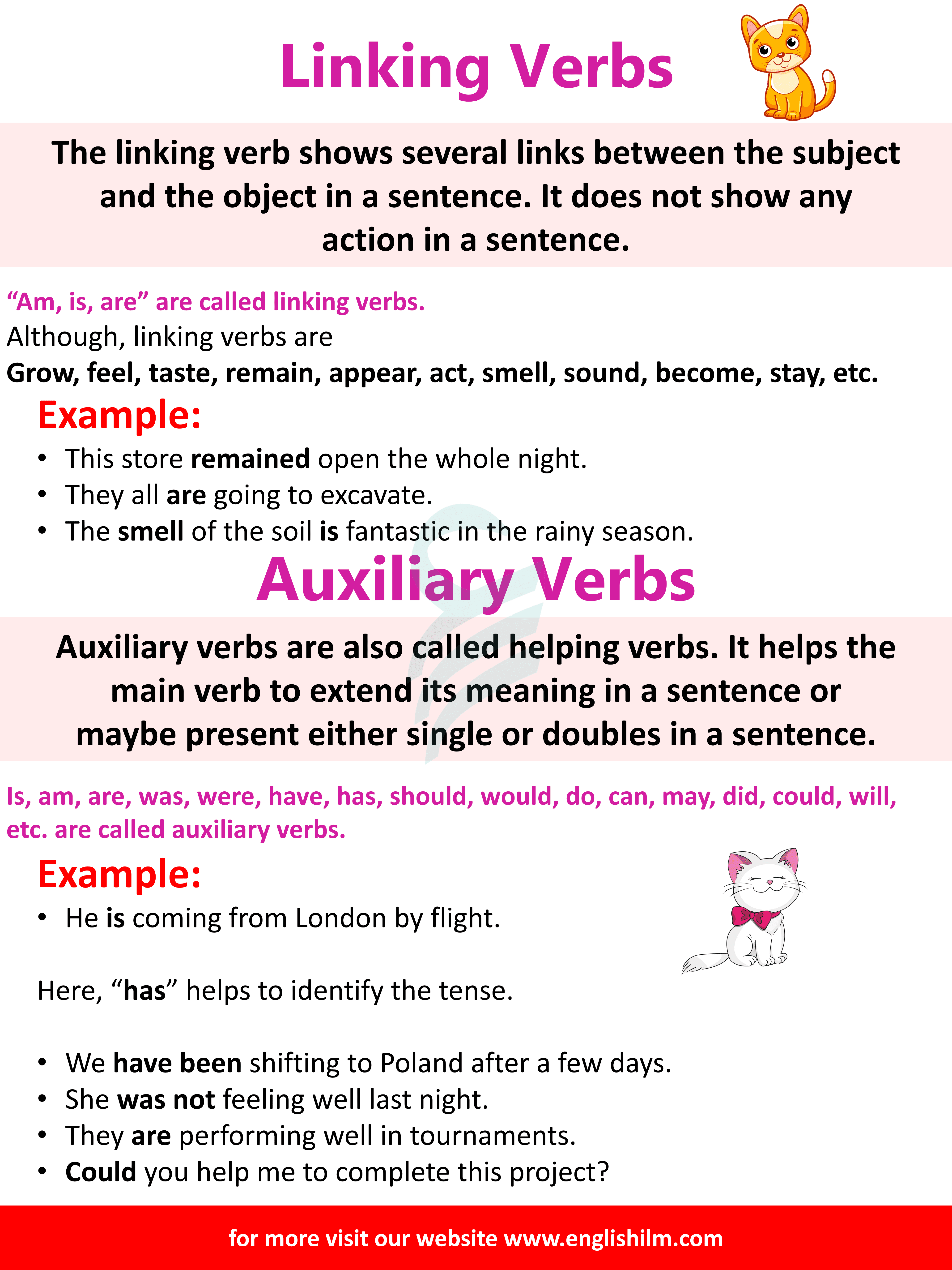
Modal Verbs
A modal verb is used to help the main verb show expectations, experiences, potential, opportunities, support, responsibilities, etc. A modal verb is moderately an auxiliary verb.
All modal verbs are auxiliary verbs, but all auxiliary verbs are not modal verbs.
List of Modal Verbs:
- Must, can, could, may, should, might, would, will, shall, etc. are called modal verbs.
For example:
- They can perform freestyles and breakdance simultaneously.
The word “can” tells about their potential.
- They should know the rules of the match.
- You must come to my birthday party.
- It might be an accidental meeting, but we met by destiny.
- You may continue your work after the break, too.
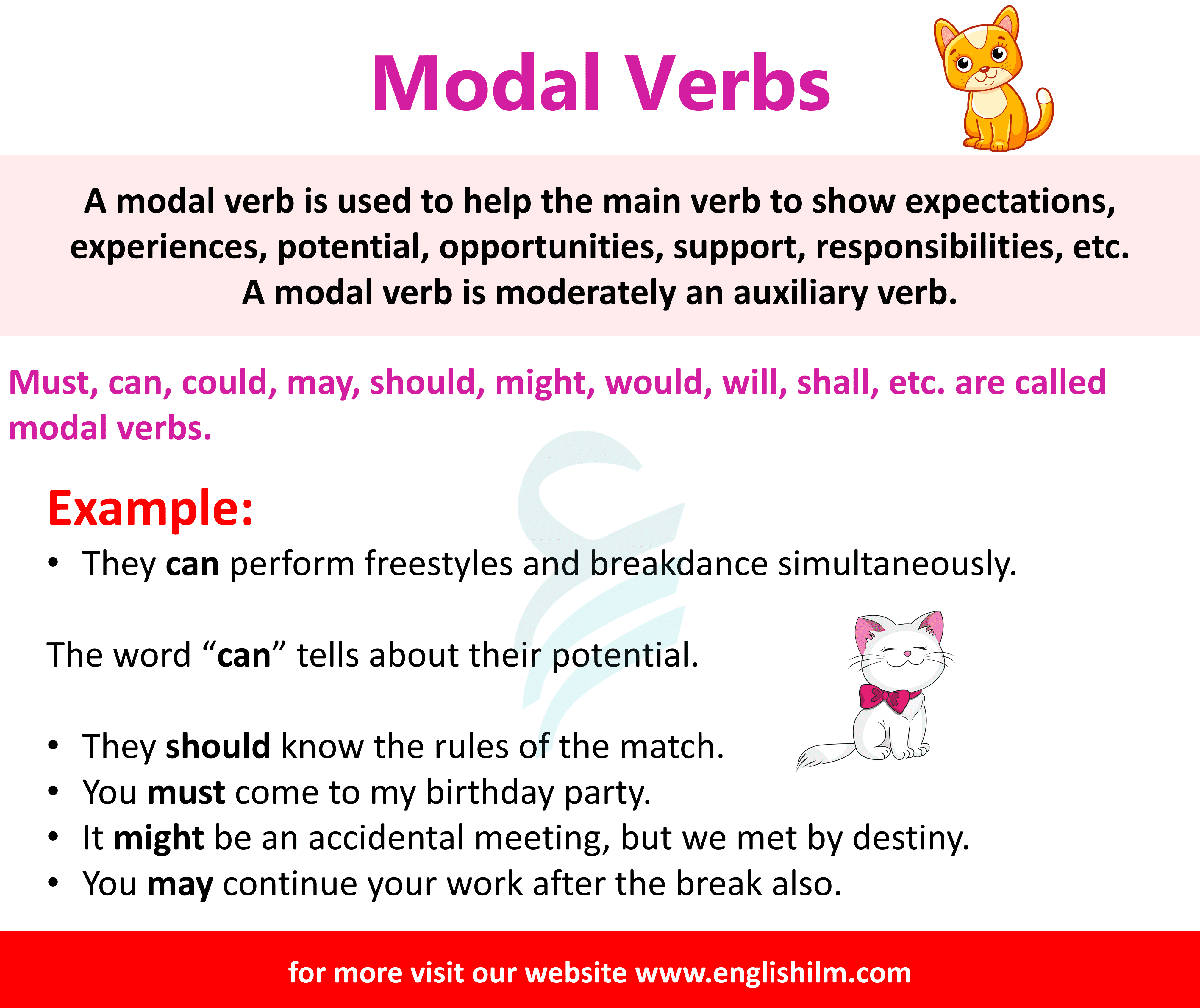
Read More


